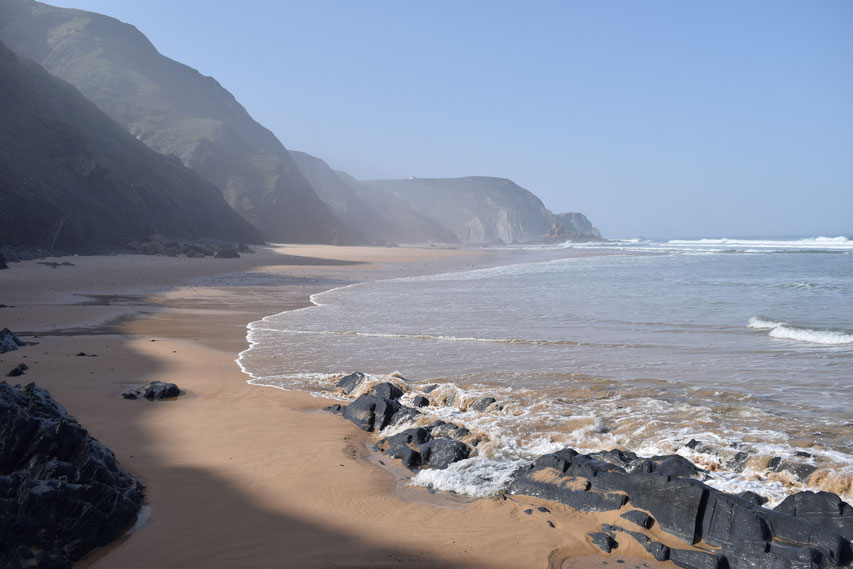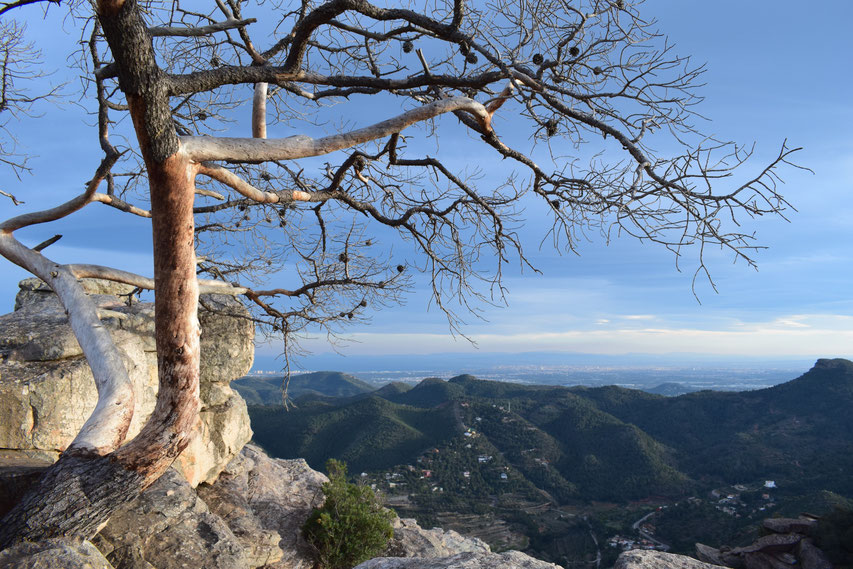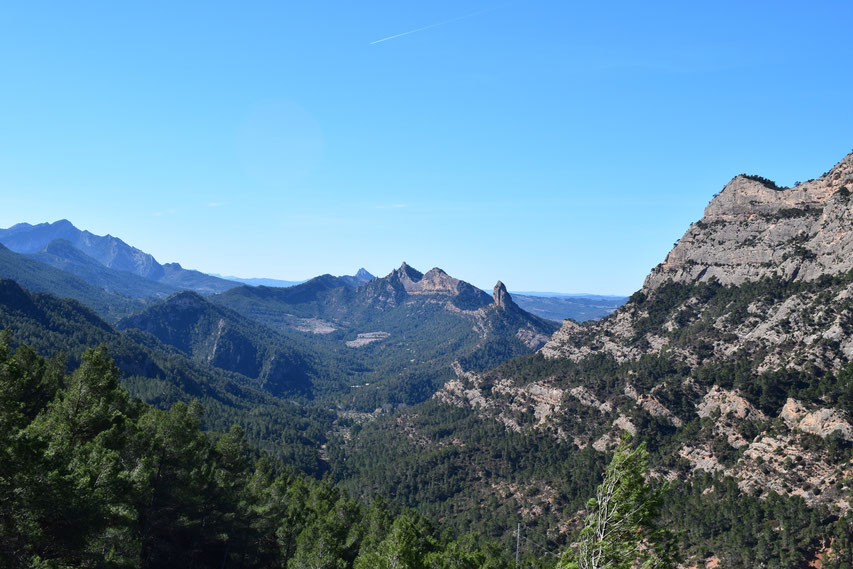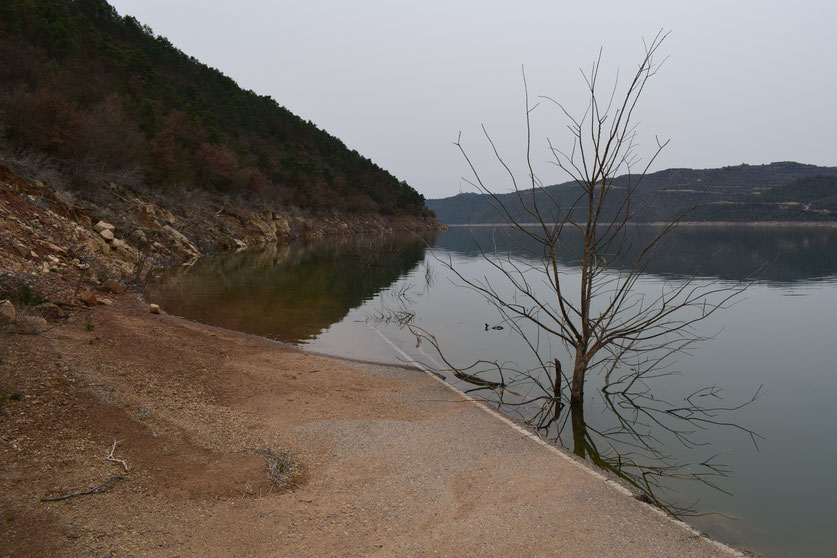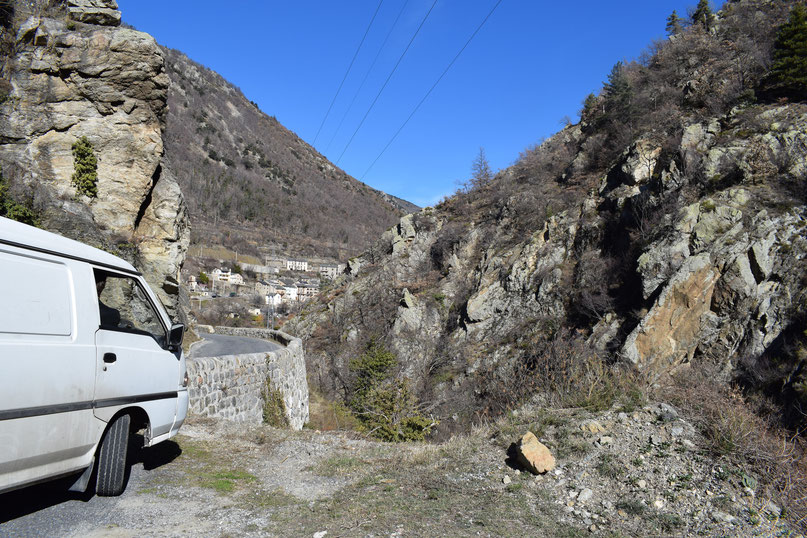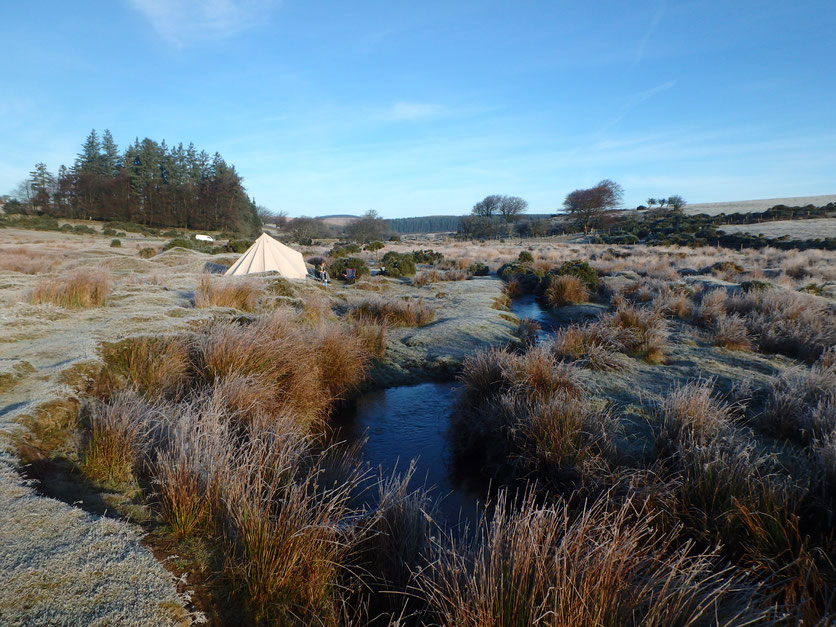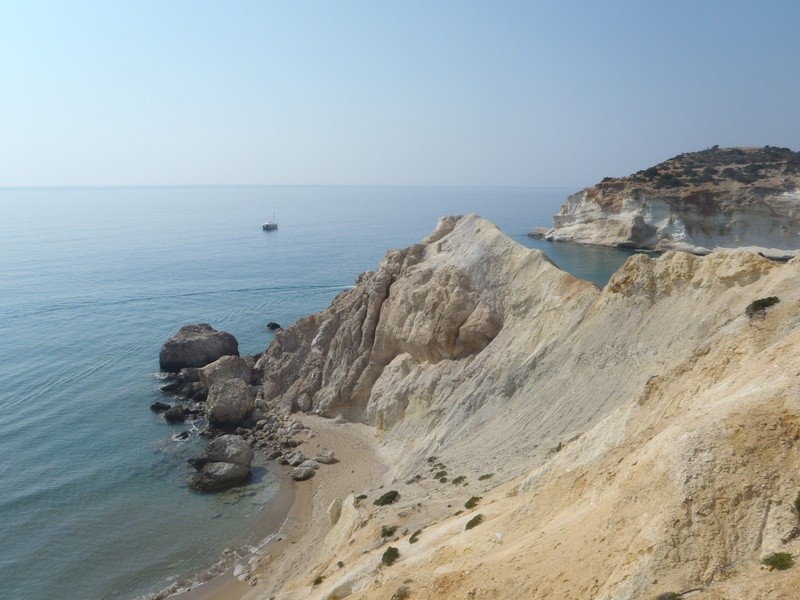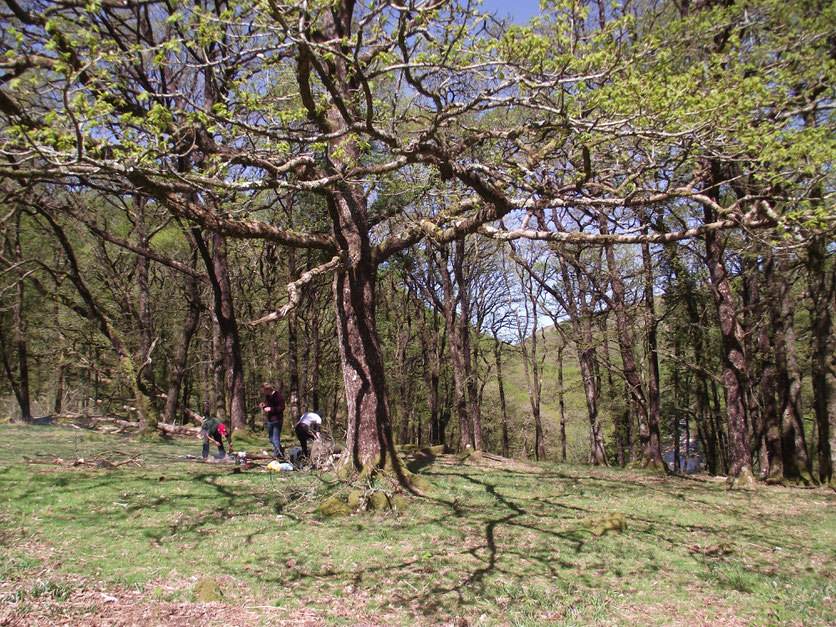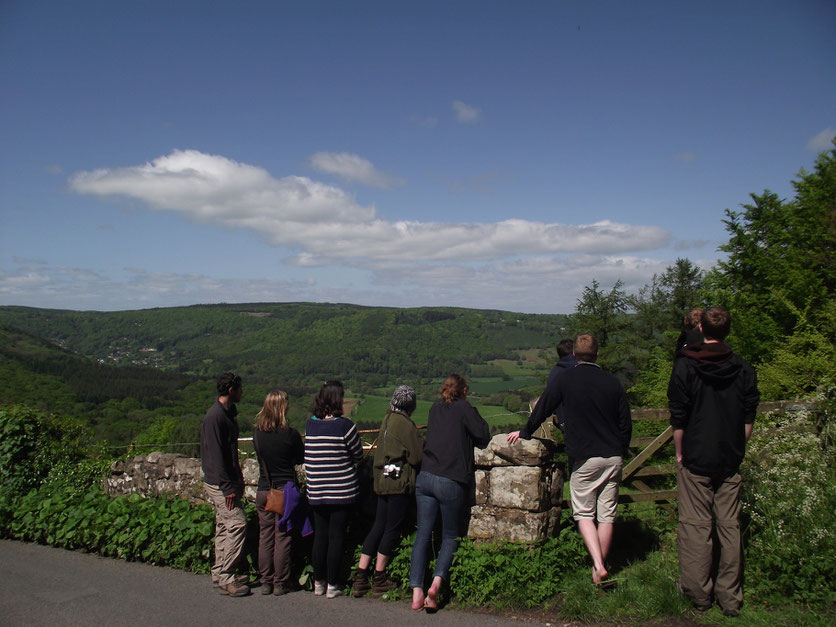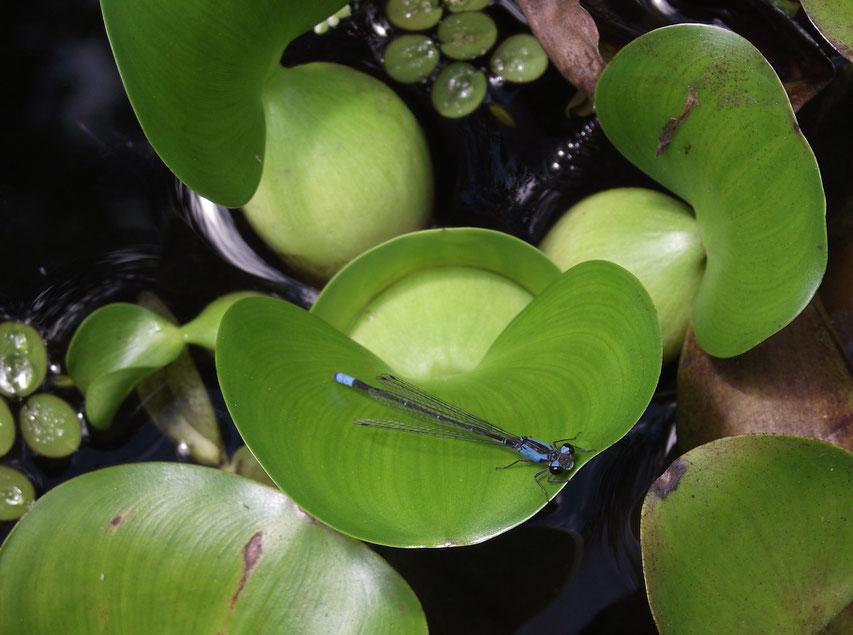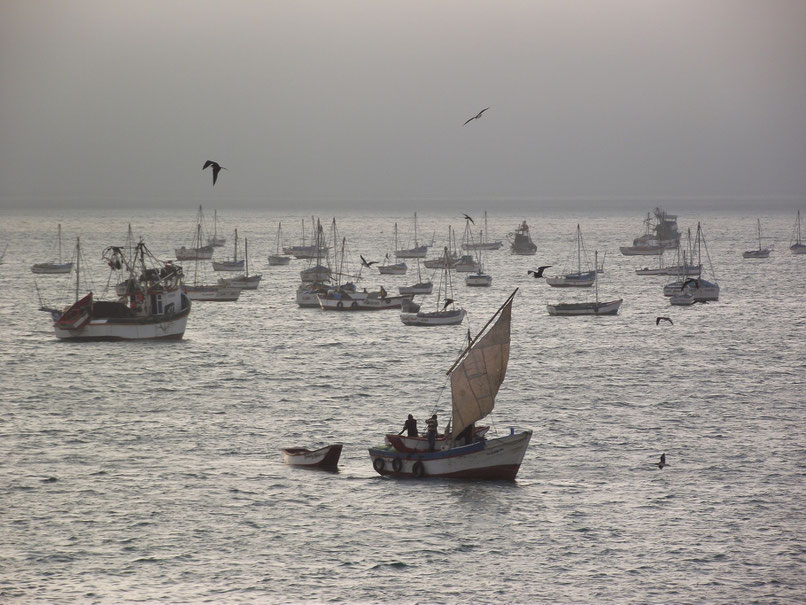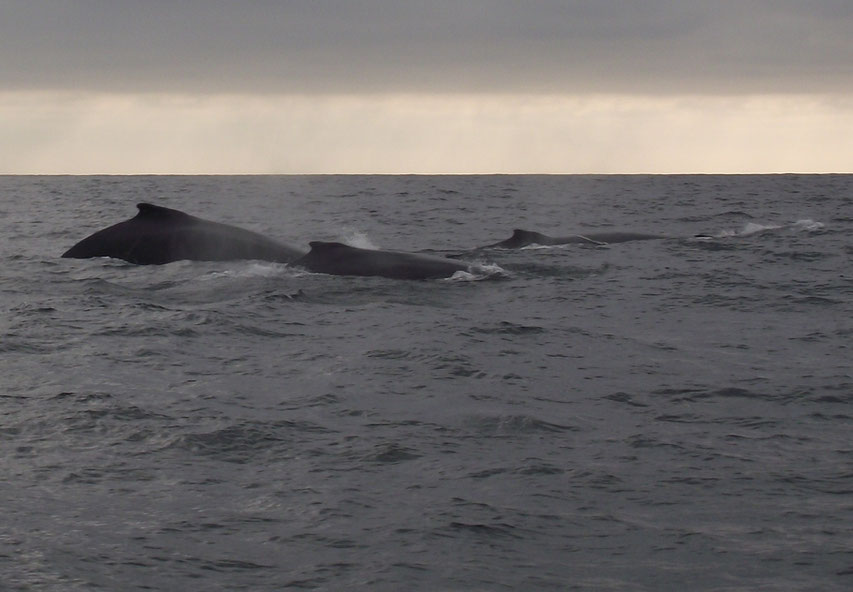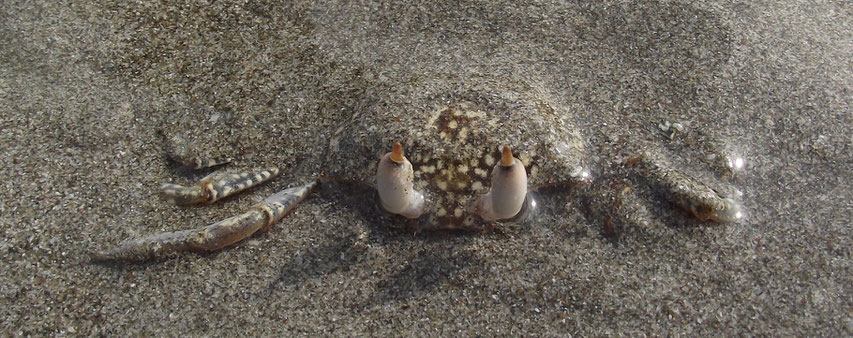
Hitchhiking and camping with a recent upgrade to life in a carpet van...
As much as I've always been in love with the freedom and lack of consumption involved in hitchhiking and sleeping outdoors, we've recently "invested" in an old carpet fitters van. We have a little house on wheels and are hoping to return the favour to some of those adventurers in need of a friendly ride.
The Laugavegur Hiking Trail - Know Before You Go and What to Expect
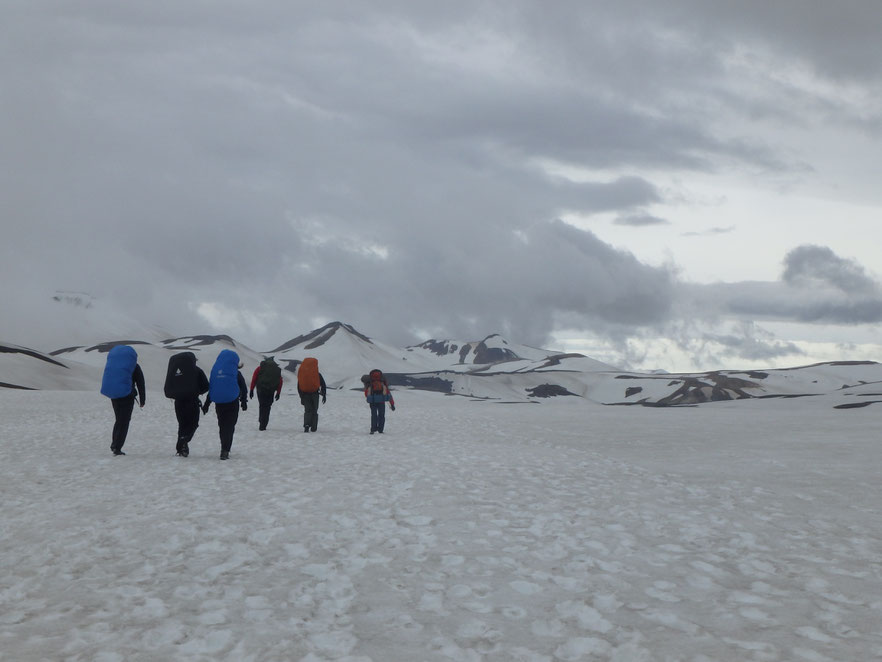
The Laugavegur is Iceland's most popular multi-day hike for good reason. Starting amongst the colourful rhyolite mountains in Landmannalagar, the trail climbs up into the snow fields and desolate black rock piles towards Hrafntinnusker, before descending into lush green moss and the beautiful lake at Álftavatn. Flowing through the valleys, there are several rivers to cross near Hvanngil, before the path leads further south over the black sand deserts of Emstrur—where every tiny green plant looks alien against its inhospitable backdrop. Finally, the trail comes to an end in the lush forests of twisted birch trees around Þórsmörk: a valley at the base of two glaciers.
Firstly, apologies that this post reads as one long lecture about all the things to do, not do, and be scared of. I'm publishing it to help readers prepare, rather than as inspiration, but I certainly do not mean to put you off. I have been working as a warden along the trail since 2017, and these are the things that I always wish hikers knew before they arrived.
This information is not official, but just from my personal experience. It is not a substitute for talking to the wardens in the Information Office at each hut, as there are some things which cannot be checked online. The hike is always dependent on the weather and other conditions on the trail.
How to check the weather before hiking the Laugavegur.

Being flexible with your timing and working around the weather forecast can make the difference between a great hike and a disaster.
The two most reliable online weather predictions are www.vedur.is and http://belgingur.is (often more accurate for Hrafntinnusker). You should familiarise yourself with both of them. It is good to look some days in advance, but things can change quickly and you should not forget to make a final check just before you leave civilisation. Wind and rain are the most changeable factors which I have focused on here, but you should also be aware of general temperatures day/night, the effects of wind chill and decreasing hours of daylight. Fog comes and goes at will and your only real defence against it is a GPS device.
Please read my Laugavegur preparation and packing list posts well in advance of your trip.
Always speak to the wardens at Landmannalaugar or Langidalur before you start and in each campsite you visit along the way, to ask their advice about weather and conditions. Up-to-date local knowledge is impossible to find online.
Hiking the Strútsstígur — from Hvanngil to Strútur, Áftavötn and Hólaskjól.

Strútsstígur is an unmarked path; it is not possible to follow indications or footprints. It is also not guaranteed that you will meet staff working in campsites or even other hikers. It is therefore, vitally important that you are experienced at hiking in Iceland, have a GPS and are entirely self-sufficient. I have added some useful information at the bottom of this article.
What to Pack for Hiking the Laugavegur Trail, Iceland.
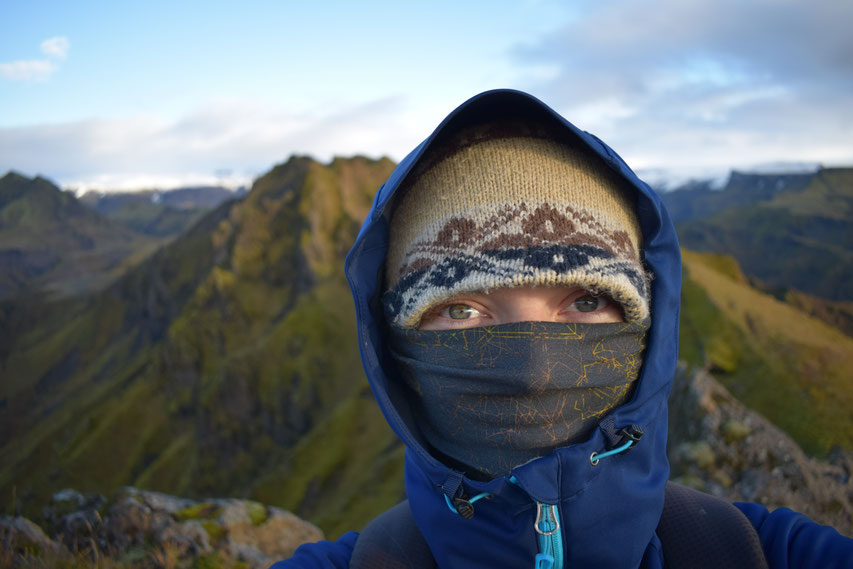
2018 was my second Summer in the Icelandic Highlands. My job as a warden revolves around the Laugavegur hiking trail and its campsites.
Passing through areas of colourful geothermal activity; across snow plains; over ice bridges; through vast, black lava fields; and finally down into a twisted birch forest with the view out towards two glaciers – all within 56km – it's no surprise that the Laugavegur is Iceland's most famous hiking trail. It's an incredibly beautiful trek, but for every nine people I've met having the time of their lives, there was [at least] one who hated it. Aside from a defeatist attitude or serious lack of physical fitness, the most certain thing to ruin your hike is the lack of adequate gear. Though temperatures are not that much more extreme than many other places in Europe, the wind can get phenomenally strong, and you'd be very lucky to pass a whole day without having to don your waterproofs.
Before catching a bus to Landmannalaugar (or Þórsmörk), please also read these articles I wrote about how to prepare for hiking the Laugavegur trail and how to read the weather forecast. They include everything else you should know.
Why you probably shouldn't hike the West Highland Way in December (but I'm glad we tried anyway).

Wind and snow up Harter Fell, the Lake District.

Despite visiting the Lake District three times on our winding ways up and down from Scotland in the van, I had never walked further into the wild than the banks of Haweswater Reservoir.
Six pristine beaches around Sagres, Portugal.
The main intention of this haphazard adventure was always to delve into Portugal, though I would have been surprised to find out that we'd enter from the South. Passing the most built up stretch of the Algarve in the rain, we bee-lined towards Sagres on the promise of surf.
March is a good time for waves, but attracts far less ordinary holiday makers. Though relatively quiet and very easy to park up our van at this time of year, I think you would have to be more careful in the Summer.
Countless vultures, a few waves and a very long tunnel (South/West Spain).

South from Ubrique, towards Alcalá de los Gazules, we drove an hour or so along small roads, though idyllic forested mountains, only persisting because every turn off was marked clearly as private land. For once our severely unspecific road map was correct in assuring us that there were no real settlements here, but under a mountain we found another "area recreativa". Somewhat of a labyrinth, "El Picacho" had barbecues cut into large boulders, picnic tables fashioned from giant hunks of wood and the generally overgrown delightful air of not having been visited much since last summer. The tree branches crooked above us like ancient witches fingers and we hid under the bridge, as the odd car passed above, like grubby trolls bathing in the river.
Several Spanish Sierras
By now we thought we were getting a little better at travelling in the van. We were driving in little hops, poking into the countryside or along the coast for an hour or two each day, never waiting until after sunset to find somewhere to sleep. Water was easy enough to find from taps in children's play parks, fontes or town centres, fuel was cheaper in Spain and we knew just about Spanish to make our lives a little easier. Slowly but surely our body clocks began to adapt from a slovenly 11am until after midnight norm, to one which made better use of the light. With little to do in the evenings, we were sleeping before the majority of eight-year-olds and I often woke up just before dawn started to scratch through the curtains. We appeared to have escaped the winter.
The river Ebro & its tributaries, the Spanish Civil War and alternative uses for shoelaces.
Had it not been for the gloom, I would have liked to stay beside Pantà de Rialb longer in the eerie silence, but we chased the promise of sunshine South. Skirting around Lleida, we followed a succession of steadily diminishing roads, looking for a blank spot on the map, as if paddling upstream to the source.
Pantà de Rialb and the lost villages.
The sky was stubbornly overcast as we approached the lake. Though with all the elements of beauty; reflections of leafy trees onto the green water's surface, rocky outcrops and a silencing distance from the highway, we couldn't shake the feeling that it was a little bit too quiet down this rough track. On the map, these roads lead to nowhere. I possibly expected a picnic site or somebodies house at the point where on paper it descended to the bank in two directions, but instead we got to a sign, "PELIGRO INUNDACIONES", and it simply became impassable in the van; great hollows and troughs down a steep slope.
On foot the road disintegrates into mud clots, completely disappearing and being replaced by shrubby bushes and rocks. What at first appeared to be a chimney poking out of a small clump of trees, turned out on closer inspection to be an empty shrine, simply a window to and from nowhere without the Mary doll to stand in it. We followed a faint and precarious pathway, still twenty-five meters above the water level, around a small headland and confusingly emerged onto the remains of a two direction tarmac road; only slightly faded white lines in the centre, but edges crumbling into emptiness. Over a sinking bridge, once proud enough for an archway, metal barriers meant to protect impossible traffic, bent towards the water like discarded staples. Sloped into a disturbing width ways diagonal, as well as the simple down-hill gradient, the road plunged into the water and obscurity.
France: a journey of three seasons and several lakes.
The morning of our intended departure from Morgins, Dan discovered that we (he) had left the head-lights on all night. Burt was in a coma. The oldest vehicle in the village by a good fifteen years you can imagine the spectacle we made heaving the van to the top of an icy hill and then charging down again with only the hand-brake to rely on. The slope out of the car park wasn't enough, but the only remaining gradient was right down through the middle of the village, road lined with kit laden skiers and troops of school trip children. A kind old man helped me get up some momentum and we watched as Dan hurtled a good hundred meters before bellowing out a puff of smoke. I hadn't been keen to be in the drivers seat...
Take two, step one - grazing through six countries.
If you've been dropping by for some time, you probably remember a little hype around last June. We'd saved and stagnated for over a year in Exeter. Unexpectedly, I'd found many things to love in that sleepy South-Western city; a small but solid medley of people, plenty of camping on Dartmoor and Devon's coast. Still, I was restless, we were gearing up for a great adventure. Burt the carpet van spluttered into our lives as a kind of tiny home on wheels, a fortified tent with space for a duvet, and we finally set of on our epic European road trip. Though the weather was better, things started that month the same as we just have, with a trip up to Scotland. As you might also know, that first drive up North and down was our last great road trip of 2016. We finished the year in Calais, laughing and crying and forgetting to shower. We're starting that original plan from scratch.
Christmas Camping
Anything I write or do now seems trivial and trite compared to what's been on my radar the last half of this year. I've almost forgotten how I used to write about beautiful things, but here we go...
"Converting" the carpet van for under £200.

Searching for a van was a mundane daily hell...
It took us months. We were looking for something that didn’t have a massive amount of miles (many under £2000 had around 200,000 on the clock), with no major mechanical problems and that wasn’t too big. More importantly, it still had to be long enough for Dan (who’s 6’4) to lie down in.
Having never owned a car before, we took vital and occasionally contradictory advise from the internet and other more experienced family and friends. Dan’s dad (Rod) came along to view and test dive any potential options and we listened to the advice of a friend's trusted mechanic before we finally took the plunge*. Our budget was £1500 and eventually, after many false starts, we eventually spent £1150 on a Hyundii H100 from 1997, an old carpet fitter's van, and £350 on repairs and a new MOT.
Deciding what to do with it next and getting materials...
- Dan read many blogs and other advice online to give us ideas on how to convert a van cheaply, treat rust and generally maintain cars as we were previously clueless.
- We kept a look out for sources of free material and hit gold outside a laminate workshop where we found (with permission) lots of off-cuts of kitchen splash board, MDF and wooden pallets. Rod also gave us some plastic political placards (who’s party will remain unnamed…) which were going to be thrown away.
- We used Gumtree and searched other similar second-hand sites to find a jigsaw, foam mattress, camping chairs.
- To treat the rust we bought Kurust (phosphoric acid), wire brushes, rust inhibiting paint, fiberglass sheets, resin and a premixed tub of fiberglass mush.
- We also bought uniform lumber to create frames for our cupboards and bed, several tubes of grip adhesive, some extra screws and insulation fluff made from recycled plastic bottles**.
- Luckily Dan and his parents had quite a good collection of tools and paint.
Before we could begin, we spent a day dismantling and removing the ugly carpeted wooden platform and shelving from the back of the van, removed the mouldy panels from the walls and cleaned the van inside and out.
Some time on Islay, Scotland and the carpet van makes it to France.

After a very slow and somewhat arduous trip up to Swansea, Wales the week before, we were particularly relieved to make it up to Scotland in relatively good time without any major mishaps.
In between fixing rusty holes in the van, changing our oil (and spilling a whole tank full onto my parents’ drive) and generally trying to sort ourselves out a bit better before leaving the UK, we found a little time for the beach...
...and we're off! The beginnings of life in a carpet van.

Having got to know each other over long, stressful nights in the library, the least organised History students in our year, it's hardly surprising that Dan and I struggle to get ourselves together before a (hopefully) long trip. Despite slogging and saving for over a year in preparation, we found ourselves committed to leaving our jobs forever in two weeks time, with no van to move into, half a flat full of things and Dan still learning to drive.
Hitchhiking, camping and other less advisable adventures on the island of Milos, Greece.

One cold, soggy winter in Southampton we were dreaming of an adventure.
My friend Bryony and I had been struggling to find any inspiration in our grimy university accommodation and imagined spending long days painting on quiet beaches; I bought a map of the Cyclades and we began to highlight dots to aim for.
Milos was so beautiful that our island hopping adventure didn't end up as extensive as we imagined, but I haven't regretted it for a second.
Dan's birthday on Dartmoor.
I've been rotting indoors for months as we "prepare" for an as-of-yet unspecific adventure elsewhere in Europe. I bounce resigned from one box to another, staring between screens and sitting so badly; my back is aching. Wild camping for Dan's birthday has become somewhat of a tradition and as the weather is starting the clear up again, we ventured out to Dartmoor to absorb some wilderness as an antidote.
Camping spots that make you wonder why we ever sleep indoors.
This collaboration of magical camping spots has taken an embarrassingly long time to put together, but I can't help but feel proud of the result. With some of my traveller idols, friends and even family involved, it's hard to decide if I'm more excited by the contributors or the places they have written about. If this doesn't persuade you that you don't always want to sleep with a roof over your head, then I'm happy to keep the wilderness for myself.
El Jardin eco-campsite and accommodation, Samaipata, Bolivia.
Having spent a week or so hopping from one nasty, [relatively] expensive accommodation to another, we were heading to Samaipata in the hopes of finding a peaceful campsite. Being enormously ripped off on a long, hot day of buses, I was feeling quite miserable by the time we arrived. It was dark, raining, everything was soggy and I wasn't appreciating being stuck back in our one-man tent. Balancing electronics and valuables on a mountain of shoes, under waterproof coats in our 'porch' to stop the water from destroying them didn't lead to the most restful night's sleep.
Waking up groggy with sun, I found El Jardin more intriguing than I could have imagined...
Camping for beginners: how to build a cooking fire.
I'm sorry to point out the obvious to those of you who know, but for the first-time camper building a good fire can often be a challenge. These are my trusted methods, materials and tips that work (nearly) every time.

Falling down the rabbit hole- life in the woods at Espiral de Luz, Samaipata, Bolivia.
I've been struggling over this post for week - how to explain my two month hiatus, how to cobble my words and photographs into describing my total infatuation with this little patch of woodland. It's been twenty-six days since we were forced to leave, but I still wake up expecting to hear the sound of insects, before realising the sad truth and missing the beautiful simplicity of that life. I'm finding it hard to move on, to step forward into modernity and realise I don't like the way the world is going, but lets start at the beginning.
Cabo Blanco- a safe haven in Peru.
By the time we left Mancora, our first stop in Peru, Dan and I were feeling pretty down. Although nothing terrible had happened, we'd spent too much time in tourist hell-holes, been ripped off a bit too often and just felt a little out of our Spanish speaking depth in the dirt-cheap campsites we'd been staying in. To make matters worse, a manic, middle-aged Australian woman approached us in Guayaquil bus station asking for $10, quickly changed her story and ran off with the money without saying thank-you. The final straw came when, after only managing to hitchhike about 50km all day, our final lift turned out to be an "unmarked taxi".
We were on the edge of the mountainous desert- the out of sight coastline on our right and the desolate town El Alto on our left. Both directions seemed like a long hot walk, so when a truck stopped to ask us if we wanted a lift down the cliff road we jumped straight in the back.
Whale watching, fishy street-art and hitchhiking Puerto-Lopez to Ayangue.
Bouncing along in the back of a fish-truck we watched the parched, cactus territory along the coastline turn to lush forest. With isolated micro-climates changing the scenery from place to place, Ecuador is amazingly varied for its size. Winter is warmer than Summer here, but the only season I didn't want to miss was when Humpback Whales come to mate. We'd spotted a few from the beach at Puerto Cayo, but it's hard to get a sense of scale at distance and I really wanted to see them up close.
Wandering along the beach at Canoa
At weekends, the stretch of beach directly in front of Canoa's town centre is mayhem. There are hippies selling jewellery, places to buy fresh fried octopus and the usual pot-bellied middle-aged men lying prostrate on the sand. Occasionally you might even see clueless tourists bobbing along on horses which will only move if chased by a man running behind with a whip. You'd be lucky to find a couple of square meters to lay out your towel and turn your head away for a second too long, your bag might disappear.*
Mindo: hummingbirds and butterflies, but not really a waterfall.
Camping next to the river, surrounded by cloud forest, with the occasional eagle swooping overhead, we've spent most of our time in Mindo cooking.
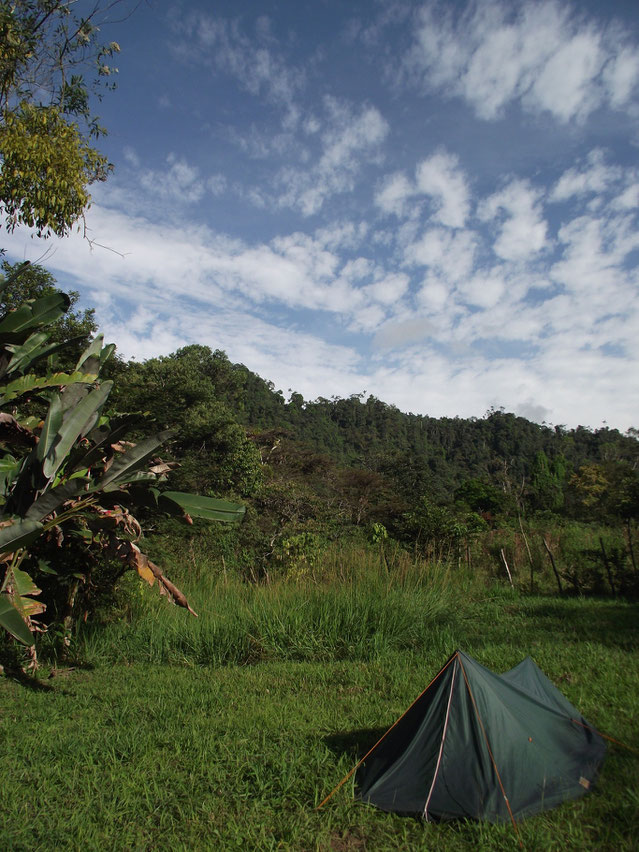
A final few days of celebration and a sad farewell to La Esperanza.
There have been few places in the world that have brought tears to my eyes when it came to time to leave. As I'm sure I've made quite obvious in my last four(?!) posts about La Esperanza, Dan and I really loved living there. This post isn't going to be very informative, but mostly a thank-you to the friends who made us feel so welcome in the village.
We finished painting the house just in time for fiesta of San Juan. This was the third fiesta we'd been part of in La Esperanza and by far the most extravagant. There were lavishly decorated vehicles throwing out sweets and roses for spectators and several parties of costumed dancers; everyone was wearing their finery and some people even brought their animals along to display.

San Agustin- Ancient Civilisations, Tasty Colombian Specialities and an Incredible Mountainous Landscape.
I don't know if it's just me, or maybe the presence of so many horses and those hats, but San Agustin feels a bit like the Wild Wild West. This small, isolated town up in the mountains of Southern Colombia is picturesque, but would never have been considered any more remarkable than its neighbours had it not been for the discovery of the largest group of religious monuments and megalithic sculptures in the whole of South America. It must have been quite some excavation!
Firstly though, the town itself is worth exploring: there are plenty of cheap, tasty places to eat, people are friendly and they've really been very patient as we've tried out our limited Spanish with them. I've been trying to capture some of the locals going about their every day lives. I find taking portraits very difficult, but this horse was tied up and therefore fair game...
Hitchhiking the Great Ocean Road...
|
|
| River by Allenvale Mile campsite. |
There are a variety of options if you want to see the Great Ocean Road. Obviously the ideal convenience choice would be to drive, but for those of us on the really frayed shoe-string budget, byeing or renting a car is pretty much out of the question. Hitchhiking on the other hand, is affordable (obviously) and unbelievably easy in this area- we barely had to wait more than ten minutes for a ride.

How to beg, borrow and steal* your way around Australia when all you have in your pocket is a collection of receipts and an old toothpick...
- Hitchhike- in case you hadn’t guessed I’m quite a fan…
- Make use of free campsites- you could pay $30 to stay in a crowded caravan park with a load of screaming kids OR you could pitch up in a nice, quiet spot by the beach for free. Admittedly some of the places we camped weren’t exactly designated spots, but if you are organised you could locate the legitimate ones on the internet, by asking in tourist offices or download the app ‘wiki camps’.
Hitchhiking in Australia- some Feathery tips...
These are obviously intended for novices and will probably otherwise come across as a bit patronising...
Hitchhiking Sydney to Melbourne.
|
|
| Night 1- a horse field |
We're pretty happy about that!
As you can imagine, this lead to a few interesting situations over the course of journey- have a look at our route on my carefully crafted map at the bottom of this post.
Dapto itself was not an encouraging place to begin; most people looked at us as if we were clinically insane, some gestured wildly and one even swore at us out the window. Nevertheless we were picked up within half an hour and our first friendly driver took us twenty kilometers down the road- not a monumental start, but after our faffing in Sydney, it was already quite late by the time we arrived in Kiama.
|
|
| 6am, Kiama |
Debilitated by jetlag, heavy bags and indecisiveness, we trekked around and eventually out of the town until we were desperate enough to camp in an empty field, on a hill, right on top of a lumpy horse poo. With me being too cocky to bring a sleeping bag (it would be hot in Australia surely), Dan having lost his roll mat on the flight, a tent too short for him to lie flat in and both of us being to exhausted to get our stuff into any sort of organised state, that night was never going to go well. With the additional fear of being discovered and a river of condensation running freely off the sides of our tent, it was a disaster.
Consequently, we were up and packed by five am and on the road again by six. Unfortunately, we beat the cars and had to wait a while for our first ten kilometer lift down the road. The truck driver who finally picked us up did little to instill us with confidence...
